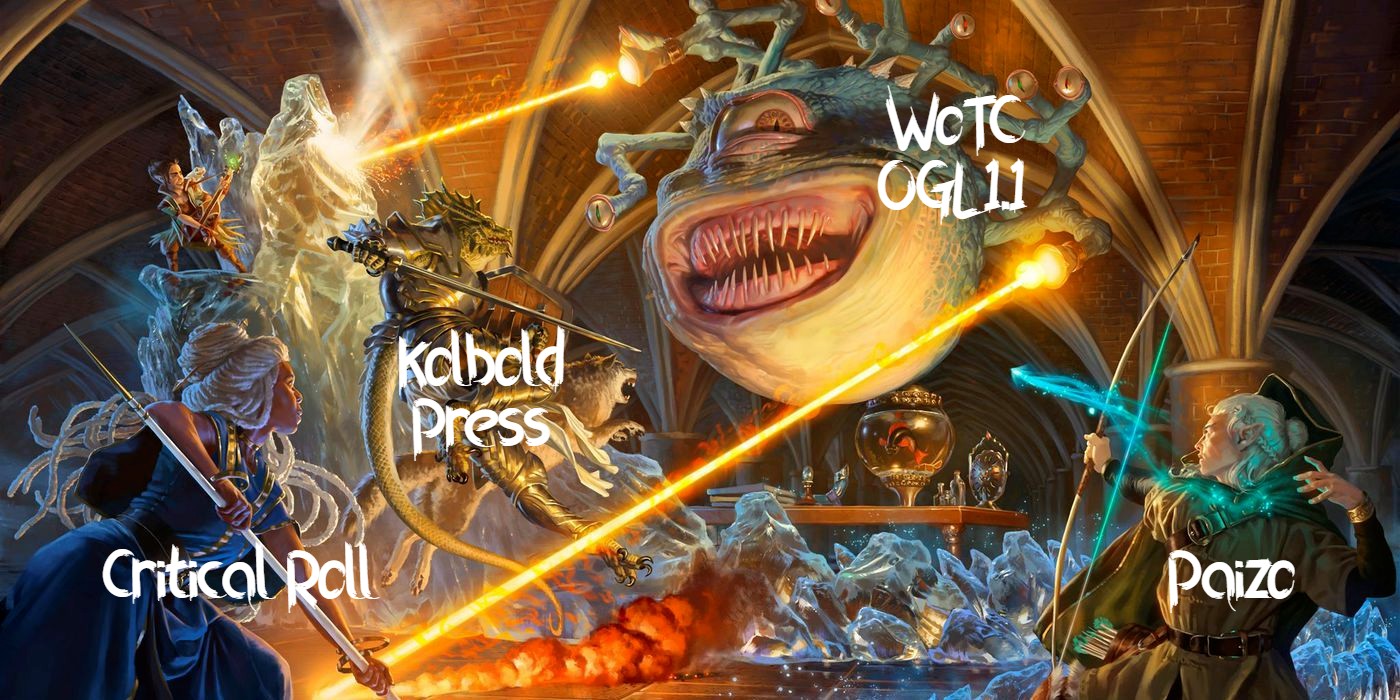This past week Kobold Press released their first playtest package for Project Black Flag. In case you have been living in a goblin warren for the past few weeks Kobold Press and their partners have created Project Black Flag in response to Wizards of the Coasts OGL debacle. Project Black Flag will be a ”new Core Fantasy tabletop ruleset: available, open, and subscription-free…” and ” is backward-compatible with 5th edition and can be used in conjunction with any existing 5E material.”
What to expect from Project Black Flag
The best way to summarize Project Black Flag (PBF for further reference) is to compare it to Pazio creating Pathfinder from the 3.5E D&D Ruleset. They kept all the parts we know and love about 5E D&D and give it a Kobold Press spin to make it feel fresh while still adding new content on top. Character creation is generally the same however starting ability scores are slightly higher. Where 5E uses a 27 point buy system, PBF uses a 32 point buy system. Also the 5E standard array is 15, 14, 13, 12, 10, 8, whereas PBF uses 16, 15, 13, 12, 10, and 8. PBF translates Race and Subrace into Lineage & Heritage, respectively (more on that later). Hit dice, backgrounds, feats (now called TALENTS), leveling up and gaining XP so far remain the same.
Lineage and Heritage breakdown
In the playtest kit, PBF has released three Lineages (Dwarves, Elves, & Humans) to pick from with two Heritages (Subrace) for each. Dwarven heritages include the Fireforge and Stone heritage. Fireforge Dwarves (originally from Kobold Press’ Tome of Heroes supplement) move to the forefront. The Fireforge dwarves “settled near areas of volcanic activity, turning such places into their forges…” and “maintain good relations with elemental creatures, coming to their aid when needed.” The Stone heritage dwarves are the typical D&D Mountain Dwarf.

PBF introduces us to the Cloud Elves, a new magic based elven heritage modeled after the High Elves of 5E. The ruleset describes Cloud Elves as “stewards of the magical forces that coursed through the cosmos” and have “built towers to study the mysteries of the skies and eventually became the heart of thriving cities.” Grove heritage elves are basically the same as the Wood Elves of 5E.
Now the two Human heritages have the most notable change from 5E. The Nomadic heritage centers around people who are skilled at both survival and environmental hazards. And the Cosmopolitan heritage who are more worldly and street-smart people. One thing you will notice about Lineage’s and Heritage’s, neither effect ability scores like D&D 5E originally did.
Talents
The ruleset approaches Feats (now known as Talents) in an interesting way. They are now broken up into three categories: magic, martial, and technical talents. Talents are noticeably stronger than their 5E counterparts. Players select Talents in a similar way to 5E feats:
• When a character chooses their background during character creation, they select one talent from a list of options provided in the background.
• When a character class grants an Improvement, they can choose to increase a single ability score by 2, two different ability scores by 1, or choose a talent from the list their class has access to assuming the character meets any necessary prerequisites.
Final Thoughts
Overall Project Black Flag seems to be heading in the right direction. Granted that this is only the first release of playtest material, I really do like what I see so far. I like that the builds you are able to create are stronger then your average 5E character. Like the Fireforge Dwarves, I hope they add more obscure lineages and heritages. And with OneD&D on the horizon and not knowing what they have in store for the franchise, Project Black Flag seems to be a solid alternative so far.



